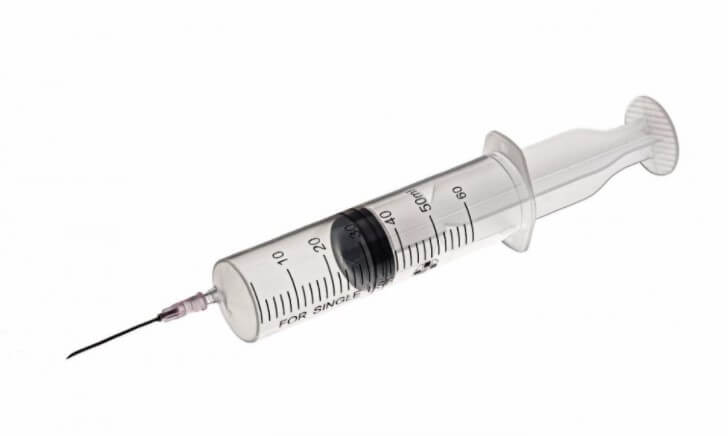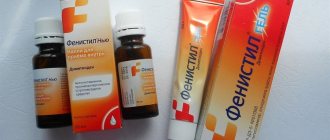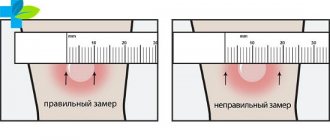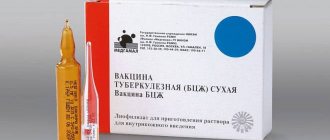In the day hospital, doctors monitor the treatment and condition of the patient, and he receives the full range of prescribed medications and procedures.
A day hospital allows people to receive full medical care, undergo prescribed tests and procedures without interrupting their family and normal lifestyle. General indications for visiting a day hospital are:
- exacerbation of chronic diseases or acute infections that do not require constant medical supervision;
- preventive treatment or rehabilitation;
- the use of drugs in therapy, after the administration of which it is necessary to remain under medical supervision;
- complex treatment with physiotherapy (massage, warming), immediately after which rest is necessary.
The following types of medical services are provided in a hospital setting:
- injections;
- droppers;
- medical supervision after operations and procedures.
How to give an intramuscular injection correctly?
During complex treatment, doctors often prescribe injections, which can be:
- subcutaneous;
- intramuscular;
- intravenous;
- intraosseous and others.
The most commonly prescribed are intramuscular injections, i.e. the drug is administered directly into muscle tissue. In this case, a gradual penetration of the drug into the vascular bed and a gradual increase in the concentration of active substances in the blood are achieved.
The intramuscular injection technique is as follows:
- to prevent bacteria from entering the patient’s bloodstream, it is necessary to use personal protective equipment (gloves, masks) and pre-treat the injection site with an antiseptic;
- the drug is prepared for administration according to the pharmaceutical manufacturer's instructions. It may require heating, mixing, dilution with saline, and so on;
- the site of drug administration is selected. There should be no visible damage to the skin: redness, bruising, areas of inflammation, wounds, and so on. The injection is usually placed in the gluteal, deltoid, trapezius or quadriceps muscles;
- the skin is stretched, after which the injection needle is inserted vertically into the soft tissue to a depth at which a small part of it remains above the surface (no more than 3-5mm). After this, using a syringe plunger, the medicine is slowly injected into the muscle;
- then the needle is removed and the area is re-treated with an antiseptic.
After administering the medicine, it is necessary to monitor the patient's condition for some time (the duration of observation depends on the drug used), as immediate medical attention may be required. The patient may develop an acute allergic reaction to the components of the drug, or a sudden change in health (dizziness, changes in blood pressure). Also, in rare cases, side effects indicated by the manufacturer of the drug occur. Intramuscular injections should only be given by medical personnel who have undergone appropriate training and know how to act in emergency situations, in case of possible atypical reactions of the body.
How to give an injection to an adult yourself
You should prepare for the procedure:
- Set aside a place on the table and lay out a clean napkin;
- Prepare a bottle of alcohol and cotton swabs;
- Prepare an ampoule with medicine;
- Disposable syringe for intramuscular injections;
- Medical disposable gloves.
Procedure technique:
- Open the bag containing the disposable syringe, put the needle with the case on the tip of the syringe;
- Take the ampoule with the medicine in your hands and open it. Sometimes there is a red or yellow dot on the ampoule - this is an indicator where you need to break off the tip of the ampoule. If there are no clues, use a nail file to make a notch on the narrow end of the ampoule, wrap it in cotton wool and break it off.
- Now take the syringe in your hands and carefully remove the cap from the needle without touching it with your hands. Take the ampoule with the medicine in your left hand, and with your right hand insert the tip of the needle into the ampoule, touching its bottom. Use the plunger of the syringe to draw out all the liquid from the ampoule.
NB Take a syringe larger in volume than the contents of the medicine in the ampoule. For example, take a 2 ml ampoule and a 3 ml syringe;
- Check that there is no air in the syringe. To do this, holding it up with the needle and pressing lightly on the piston, squeeze out all the air until the medicine drips out.
- The patient lies on his stomach. Determine the place where you will give the injection. To do this, mentally divide the right or left gluteal region into 4 quadrants. You will prick in the outer upper quadrant, where there is a strong muscle layer and there are no large vessels or nerve trunks;
- Take the syringe comfortably in your right hand and bring it to the selected point at a distance of 3-4 cm from the surface of the buttock. Using the fingers of your other hand, lightly squeeze the skin fold and quickly insert the syringe approximately ¾ of the way through the needle at a right angle. Inject the medicine slowly! After insertion, quickly remove the needle and press the skin with an alcohol swab. Massage the injection site for a minute.
Complications after an injection in the buttock
After an injection in the buttock, the patient may experience the following complications:
- fibrosis (scarring) of muscle fibers;
- development of contracture - stiffness of the limb due to skin tightness or muscle damage;
- inflammation of nerve endings;
- hematoma.
But the most dangerous complication is the development of embolism - blockage of blood vessels by an air bubble. It develops as a result of accidental insertion of a needle into the bloodstream, or due to improper preparation of the drug.
Another serious consequence of improper injection is an abscess - a purulent inflammation that occurs when antiseptic rules are not followed (accidental infection of the injection site). The affected area swells, becomes inflamed, and the local temperature rises. Pus forms and requires surgery to remove.
To avoid complications, you should avoid self-administered intramuscular injections. It is better to go to a day hospital, where all medical procedures are performed by qualified doctors and nurses who follow antiseptic techniques and know the specifics of preparing and administering various drugs.
How to give an intravenous injection?
With an intravenous injection, the medicine is injected directly into the bloodstream, which ensures the fastest possible onset of action of the medicine. However, compared to an intramuscular injection, the risk of embolism—air bubbles entering the vessels and arteries—increases.
The intravenous injection technique is as follows:
- make sure the needles and syringes used are sterile; they must be disposable;
- treat the skin with an antiseptic at the injection site. Most often, the injection is given into a vein in the arm;
- to prevent arm injury, before infusion, tighten your arm with a tourniquet just above the elbow;
- ask the patient to make several vigorous movements with the hand (fingers), or massage the palm. This will fill the veins with blood;
- stretch the skin and insert the needle into the vein at an angle of approximately 30° to the limb;
- slowly inject the drug into a vein using a syringe plunger;
- After completing the infusion, remove the tourniquet, carefully remove the needle and cover the injection site with a napkin moistened with an antiseptic.
After the injection, the patient's condition should be observed for several minutes. Sometimes longer observation is required - this depends on the individual characteristics of the body, the drug administered and other factors.
Intravenous injections are recommended to be performed only by medical personnel. If you or a loved one have been prescribed injections, do not attempt to administer them yourself. Contact the day hospital.
What should you do before the injection?
It is always important for the patient to understand that the less he worries, the faster and more painless the injection will be. It happens that when a person sees a syringe, he falls into a stupor and his muscles cramp. This greatly complicates the process, because with tense muscles the injection will be painful in any case. In such cases, people are advised to consult a psychotherapist, otherwise the process of treatment for diseases may drag on for a very long time.
You can contact a psychotherapist even with such problems
It is also important to ensure that the syringe and needle are of high quality. A good needle enters the tissue easily and painlessly. For this it is important that it is well polished. Otherwise, all the irregularities will capture tiny pieces of skin and the person will feel pain. Due to a poor-quality needle, the injection site may take a long time to heal and hurt for several days. That is why it is recommended to buy syringes from pharmacies with good reviews. And it’s better not to skimp on syringes either.

Needles with a black rubber band on the piston are considered better than others
It is also important that the piston inside the cylinder moves easily and smoothly. If it moves with difficulty, the syringe will obviously change its angle, which will affect the patient with pain. Some people recommend buying syringes with black rubber bands on the plunger. Good manufacturers make them from rubber, which does not cause allergies. The piston in such syringes moves smoothly, so the injection should be painless.
Complications after intravenous injections
If the intravenous injection technique is not followed, various complications develop:
- hematomas. They arise for various reasons. For example, vein fragility may occur. Fragile veins are visually no different from normal ones, but are more easily injured and ruptured when a needle is inserted;
- infiltration. The medicine does not enter the bloodstream, but is distributed in the subcutaneous tissue. As a result, a painful lump forms at the injection site, there is a risk of tissue scarring, and the effectiveness of therapy decreases. Often such a complication develops due to the mobility of the veins, especially in elderly patients;
- blood poisoning. Occurs when the rules of asepsis are violated and non-sterile instruments are used. The consequences can be different - for example, the development of sepsis, infection of the patient with streptococcus or other bacteria.
Another dangerous complication is an acute allergic reaction to the administered drug. It develops suddenly: the patient's airways swell (Quincke's edema), he cannot breathe normally and suffocates. Immediate medical attention is required.
Intramuscular injections - what are they and why do them?
Injections are divided into two types - intravenous and intramuscular. The first should be trusted exclusively to professionals. The latter can be practiced even by people remote from medical practice. An intramuscular injection is done to penetrate the needle under the subcutaneous fat layer and inject the medicinal drug.
For injection, it is recommended to choose places with the maximum volume of muscle mass, in which there are no large vessels and nerve endings:
- buttocks;
- outer thigh;
- shoulder area.
In order to give an injection, you need to choose a comfortable position. The best options are a lying position or a standing half-turn position. If you plan to inject into the gluteal muscle, it is recommended to give it a slap before administering the injection. This will relieve muscle tension, which will reduce pain to a minimum.
If the injection is performed in the reed area, then it is first necessary to collect the fat layer into a fold. This will prevent the needle from entering the periosteum. Intramuscular injection is the main alternative to taking pills. The action of the injection is more effective and faster. This is especially true for those people who experience severe pain and need prompt relief.
Follow these steps:

This is important:
carefully read the instructions for the medicine; some medicines (for example, oil preparations) must first be heated, and powder analogues must be diluted with novocaine.
How to prepare for the procedure and what will be needed for this?
For intramuscular injection you will need:
- ampoule with medical solution;
- dry substance and ampoules with solvent;
- cotton wool;
- alcohol;
- syringe.
To prepare for the procedure, you should choose a place for medical supplies in advance. Next, wash your hands with soap and dry them well with a towel. Review the medication ampoules to make sure they have the correct expiration date. Take the ampoule and turn it over so that all the contents are at the bottom of the bottle. To do this, you can tap your fingernail on the top of the ampoule.
Wet a cotton swab with alcohol solution and treat the top of the bottle. Next, you should file the ampoule a little so that the tip can be broken off freely. Take a disposable syringe; reusing the tool, even if you are injecting only yourself, is strictly prohibited.
Draw the contents of the bottle into the syringe and turn it up. Slowly press down on the syringe handle to push out excess air. Stop when drops of medical solution appear on the tip of the instrument.
Select the injection site, divide the area into four parts, wipe the upper area with cotton wool soaked in alcohol and disinfect several times. After this, you can give the injection.
Tip: choose the volume of the syringe depending on the type of medicine and the location of the procedure. For example, syringes from 2 ml are best suited for injection into the thigh. To inject the solution into the buttock, you should choose an instrument with a volume of 5 ml. You should not use syringes larger than 10 ml, as this can lead to the formation of difficult to resolve tumors and lumps.
Without forgetting about safety
We learned how to properly give an intramuscular injection. However, before, during and after the procedure, there are mandatory rules:
- the syringe, ampoules, cotton wool and gloves (if you used them) must be thrown away. Do not use a disposable syringe twice, even on the same patient. You should not skimp on cotton wool and soak an already used tampon in alcohol. Traces of blood remain on it, which can lead to infection of another person;
- If you need to give several injections at a time, you should distribute them over several places. It is not necessary to inject only into the gluteal area, as this can lead to the formation of lumps and lumps;
- When carrying out the procedure, be sure to ensure that the instruments are sterile;
- if there are no special conditions for administering the injection, then it is recommended to choose 2-cc types of syringes. They ensure faster distribution of the drug in the bloodstream, and also minimize the risk of compaction formation;
- If blood begins to flow into the syringe during injection, it means you have entered a blood vessel. To correct the situation, slightly change the direction of needle insertion and reduce the penetration depth.
You should give injections yourself only after consulting a doctor, who will indicate the medications you need, their dosage and frequency of use. It is important to remember that in addition to medicinal properties, most drugs have a list of contraindications.
The technique for children is practically no different from the procedure for adults. Choose syringes of a smaller volume than for an adult, choose 4 cm needles. Before injecting, you need to massage the baby’s muscles well. Preparations for the procedure should be done away from the child’s eyes; do not frighten him in advance.
However, it is not worth convincing the baby that it will not hurt. He should know that during the injection there may be a feeling of discomfort. However, this will not last long and the painful sensations will quickly pass. Convince your child that this measure is necessary to fight the disease. At the end of the procedure, be sure to reward him with a sweet reward.
Do we give the injection ourselves or do we need a nurse?
Injections are often used in therapy both in the treatment of acute infections and in the prevention of exacerbations of chronic diseases. And the patient may be faced with the question of regular injections. It is not recommended to do them yourself; you should entrust the procedure to doctors, for example, visiting a day hospital, where:
- medical personnel strictly observe the rules of asepsis - the risk of using an unsterile instrument and introducing infection at the injection site is eliminated;
- the healthcare worker correctly selects and prepares the muscle (or vein) for administering the drug. This significantly reduces the likelihood of consequences such as painful hematoma or infiltration;
- the specialist prepares the medicine in the required concentration. Many modern remedies require preliminary preparation: for example, mixing with other medications, diluting in saline, heating. Thanks to extensive experience and professional skills, health workers correctly prepare the drug before injection;
- the procedure is ensured to be painless. Doctors and nurses are trained in various types of injections, and can give the injection almost painlessly, even in difficult cases (mobile or fragile veins).
But the main advantage of contacting a nurse is that, in the event of an acute reaction to the administered drug, she can take emergency measures to help the patient.
What to do if it is not possible to hire a nurse to care for a patient? The best option is treatment at a day hospital, in which the patient receives the necessary therapy under the supervision of specialists: he is given injections and drips, undergoes physical procedures, and is observed by doctors. But there is no need to go to the hospital or change your usual routine.
How much does it cost to install an IV?
Intravenous infusion (or drip) involves administering medications directly into a vein, which allows you to quickly increase the concentration of drugs to the desired therapeutic values. However, if the needle insertion technique is violated, there are some risks:
- entry of air bubbles into the bloodstream and development of an air embolism in the patient;
- damage to the walls of the vein or other injuries to the bloodstream.
Another risk is that, in the absence of sufficient experience, you can end up in soft tissue or capillaries instead of a vein. Only a medical professional should administer IVs! Even if the drip is placed correctly, there are other features of intravenous infusion. For example, it is important to adjust the rate of delivery of the drug, assess the patient’s well-being and his body’s reaction to the procedures.
It is optimal to undergo IV drips under the supervision of experienced health workers in a day hospital setting. Despite the fact that this is a paid service, its cost is affordable, and you get many benefits:
- no risk of embolism, infection, hematoma and other complications. All manipulations are performed by experienced nurses under the supervision of a doctor using disposable sterile consumables;
- administration of the drug under the supervision of a nurse who checks the dosage, sets the correct rate of administration of the drug, and monitors the patient’s condition during and after the procedure. If the first signs of allergy or side effects appear, appropriate measures will be taken;
- treatment in comfortable conditions. The drip takes a long time. In a day hospital, you can rest and relax while treatment is ongoing.
You should not try to put an IV on yourself or your loved ones. This is fraught with complications and infections. Uncontrolled intravenous infusion of medications can injure the bloodstream, lead to dangerous side effects, and aggravate the patient’s condition.
Complications when performing intramuscular injection
Before you take independent action, you need to find out about all the possible complications so as not to harm yourself or your loved ones.
Infection with hepatitis B, C virus, HIV infection.
It would seem that you are doing everything according to the rules. Maintain asepsis! What problems could there be? And here are the ones! Unfortunately, there are quite a few people who can be virus carriers and don’t even know about it. But their blood is dangerous for healthy people. Giving an intramuscular injection is potentially dangerous in terms of infection.
Advice:
Use only disposable syringes! And second! Wear disposable medical gloves for manipulation!
Formation of infiltrates
Dense, moderately painful lumps or lumps deep in the muscle at the injection site are formed for several reasons:
- The patient is prescribed a large number of injections and they are given too close to each other;
- Seals are formed if the medicine was stored in the refrigerator before direct use;
- Injecting the medicine very quickly into the muscle promotes the formation of lumps.
Advice:
Change injection sites daily (day - right buttock, day - left). Warm the ampoule slightly in warm palms. Give the medicine slowly. If bumps appear, apply an iodine mesh, warm the seals with a heating pad, and apply a vodka compress at night. The slightest pain and redness at the site of “cold” infiltrates is a reason to consult a doctor about the development of an abscess.
Abscesses at the injection site
A serious complication associated with the entry of microbes into the gluteal muscle during the injection. The reason is non-compliance with the basics of asepsis. The first symptoms of a gluteal abscess: malaise, increased body temperature, local redness of the skin, swelling, the skin at the site of the abscess is hot, troubling throbbing pain.
Advice:
Without wasting time, contact a surgeon. Most likely, antibiotics will be prescribed. If a purulent cavity has already formed, a cross-shaped incision will be made, the wound will be washed, drained, an aseptic bandage will be applied and the abscess will be treated further.
Hematomas
Often after the injection the wound bleeds for a long time. Apparently you hit a small vessel. The next day, a small or even extensive hematoma may form at the injection site. In principle, there is nothing terrible about this. Just after removing the needle, you need to press down firmly on the tampon, hold it for a minute or two and massage. The resulting hematomas then resolve and disappear without a trace.
Oil or air embolism
It does not occur often, only if you violate the rules for preparing for intramuscular injections: for example, you did not completely release all the air from the syringe. In addition, sometimes doctors prescribe oil-based injections or suspensions to the patient.
If you make an injection unsuccessfully and get into a vessel, such a medicine can clog them, disrupt tissue nutrition, and necrosis will occur. Or drops of the medicine will penetrate into the general bloodstream and reach vital organs, for example, a pulmonary embolism will occur, which can even result in death.
Advice:
Still, don’t make oil medicines or suspensions yourself. Check the syringe for air. Read the labels on medications carefully. Among them there are those that cannot be injected intramuscularly, only into a vein, otherwise they cause tissue necrosis. For example, Cavinton.
Anaphylactic shock
A very serious complication that can happen to anyone. Very rare, but there are cases of drug intolerance.
Advice:
If you have never taken a medicine prescribed by a doctor before, it is better not to risk it and do the first injection at the clinic. There are all the conditions for a quick response in such situations.
Cream-wax “Zdorov”
- a remedy for the treatment of arthritis, arthrosis and osteochondrosis. It is well absorbed, relieves inflammation, pain and swelling go away. Useful for acute inflammation and chronic degenerative lesions.
Innovation of Russian scientists
helps to cope with alcohol addiction in a month. A safe, natural remedy that can be given even without the person’s knowledge.
What to do if the needle breaks
If the patient, out of fear of the injection, shakes and shrinks into a ball, and when the needle enters the muscle, he tenses and suddenly twitches, theoretically the needle can break and remain in the muscle. This will cause fear not only in the patient, but also in the person doing the injection.
Advice:
Calm yourself and reassure the patient. The needle will not move anywhere from the injection site. The main thing is not to let the patient move. If the tip of the needle sticks out above the surface of the skin, you can try to remove it with tweezers, after carefully wiping it with alcohol.
If the fragment is not visible, call a doctor or an ambulance. In any case, you and your patient will get away with a slight fright.
If the needle gets into the nerve trunk on the buttock
There are difficult patients: exhausted, when the muscle layer on the buttocks is minimal. Or the patient has scoliosis of the spine, displacement of the pelvic bones and it is also difficult to determine where the outer upper quadrant is located, where it is recommended to place the injection.
In difficult cases, injury to the nerve trunks in the gluteal region is possible. This will cause shooting pain, maybe even radiating to the leg or perineum, and numbness in areas of the skin.
Advice:
Remove the needle immediately. Most likely, such an injury will not entail any serious, undesirable consequences. Be careful. And it is better, if possible, not to take on the treatment of such complex patients.
How to give an intramuscular injection into the buttock? Prepare properly for the procedure, observing aseptic measures. Be sure to select a safe area in the buttock for the injection. Know possible complications: development of infiltration, abscess, embolism, anaphylactic shock and prevent their development.
Most injections prescribed by doctors for the disease are called intramuscular. Simply put, it is an injection into the buttock or thigh. Everything seems simple, but in reality this is not always the case. This easy procedure has its own “surprises”.
There are several common types of complications after intramuscular injections. Bruise
In medical language it is called a hematoma.
It is the most harmless complication. It goes away on its own and does not require treatment. Induration, or infiltration
Occurs when the medicine enters the subcutaneous fat cell rather than the muscle.
The resorption process takes a very long time; in some cases, an abscess may form at the injection site. However, there is no reason to worry if the lump - with or without a bruise - does not bother you, is palpable, but does not hurt, and the injection site is not red or hot. When a seal forms, it is recommended to apply a compress: take a 6-8-layer gauze cloth, moisten it with alcohol, squeeze it out and apply it to the seal site. Place compress paper on top of the napkin, and on top of it - a layer of cotton wool, completely covering the two previous layers. Place a piece of bandage over the compress, covering the cotton wool, and secure on all four sides with adhesive tape. The compress is removed after 6-8 hours. You can help the lump to dissolve with the following means: iodine mesh, apply a cabbage leaf several times a day, cut it well with a knife (optionally, beat it off), apply with or without honey, you can make a compress with heparin-containing gel and dimexide: apply the gel to the surface, and fold a bandage on top , moistened with dimexide diluted 1:5. An abscess or abscess
As a rule, it is provoked by microbes that enter through the skin when injected.
It's not such a safe situation anymore. The first symptom that should make you wary is swelling and redness, possibly throbbing pain. If you rush to the doctor, you will get by with standard treatment at an early stage. And if you miss the moment, you will have to use the services of a surgeon and his scalpel. Nerve
Damage When injected into the buttock, there is a slim chance of hitting the sciatic nerve, which runs through the middle and lower part of the buttocks.
This is both painful and can also temporarily paralyze. A neurologist will help you get rid of the consequences. Allergic reaction
The occurrence of an allergic reaction cannot always be predicted.
Symptoms always appear immediately. Swelling, redness, itching at the injection site. Some may experience allergic rhinitis, and some may experience conjunctivitis. In this case, you should immediately consult a doctor. Needle breakage
This can happen if the patient’s muscles begin to contract sharply - the person, for example, is afraid or when using a dull or defective needle.
What to do if a needle breaks:
reassure your client and calm down yourself;
if the patient was standing, place him on his stomach; if he was in a lying position, ask him not to move; press firmly on the buttock at the injection site with the first and second fingers of your left hand; When the tip of the needle appears, grab it with tweezers held in your right hand. To the doctor!
If after the injection you observe: an increase in temperature, severe redness of the injection site, severe pain, swelling, pus is released. Visit a surgeon soon! The longer you wait to visit, the more likely you are to need surgery.
When there is no way to get to the doctor and someone needs to pick up a syringe.
It happens that you need to get an injection, but there is no doctor nearby. And you have to turn to relatives and those who are nearby. There are craftsmen who can inject themselves, but this is not a very good idea, if only because it is inconvenient. It is better to give instructions to a person who is ready to help with the procedure.
Treatment in a day hospital
The main advantage of a day hospital is the ability to organize high-quality treatment without leaving home. The patient does not need to go to the hospital, but still receives professional medical care. As a result, it becomes possible:
- carrying out therapy that requires regular administration of medications;
- completion of inpatient treatment;
- preparation for complex diagnostic tests, which requires supervision by medical personnel;
- planned preventive health care for patients suffering from chronic diseases.
Treatment in a day hospital is carried out under the supervision of a doctor who develops a treatment regimen taking into account the individual characteristics of the patient’s body.
The scheme of procedures is controlled by junior medical staff: the nurse checks that the patient attends the prescribed procedures on time, checks the dosage of medications, and monitors the general well-being of the patient. The patient receives comprehensive medical care, but does not have to stay in the hospital 24 hours a day.
The main advantages of a day hospital are as follows:
- maximum psychological comfort – patients undergo treatment without leaving their home environment, which avoids additional stress;
- complex therapy and strict adherence to medical recommendations - staying in the hospital allows you to receive IVs and injections on time without the risk of complications;
- treatment without interruption from family and work - a day hospital is suitable for parents with small children, specialists in responsible positions.
Before admission to treatment, the supervising doctor develops a therapy regimen and monitors its implementation by nurses. To undergo treatment in a day hospital, you do not need any preliminary preparation or collection of documents; you just need to leave a request on the medical website. Use this service if:
- you suffer from a chronic disease and want to undergo routine treatment;
- Your doctor has prescribed you injections or IVs and you need the help of qualified medical professionals.
When choosing a day hospital, pay attention to factors such as:
- working hours – it is more convenient when medical services are provided seven days a week, since most injections must be completed in courses without breaks;
- qualifications of employees - only experienced medical workers work in the ON Clinic network;
- cost of services – stay in a day hospital is paid. But for a small fee, you get the opportunity to undergo prescribed therapeutic procedures in comfortable conditions under the supervision of doctors and nurses.











